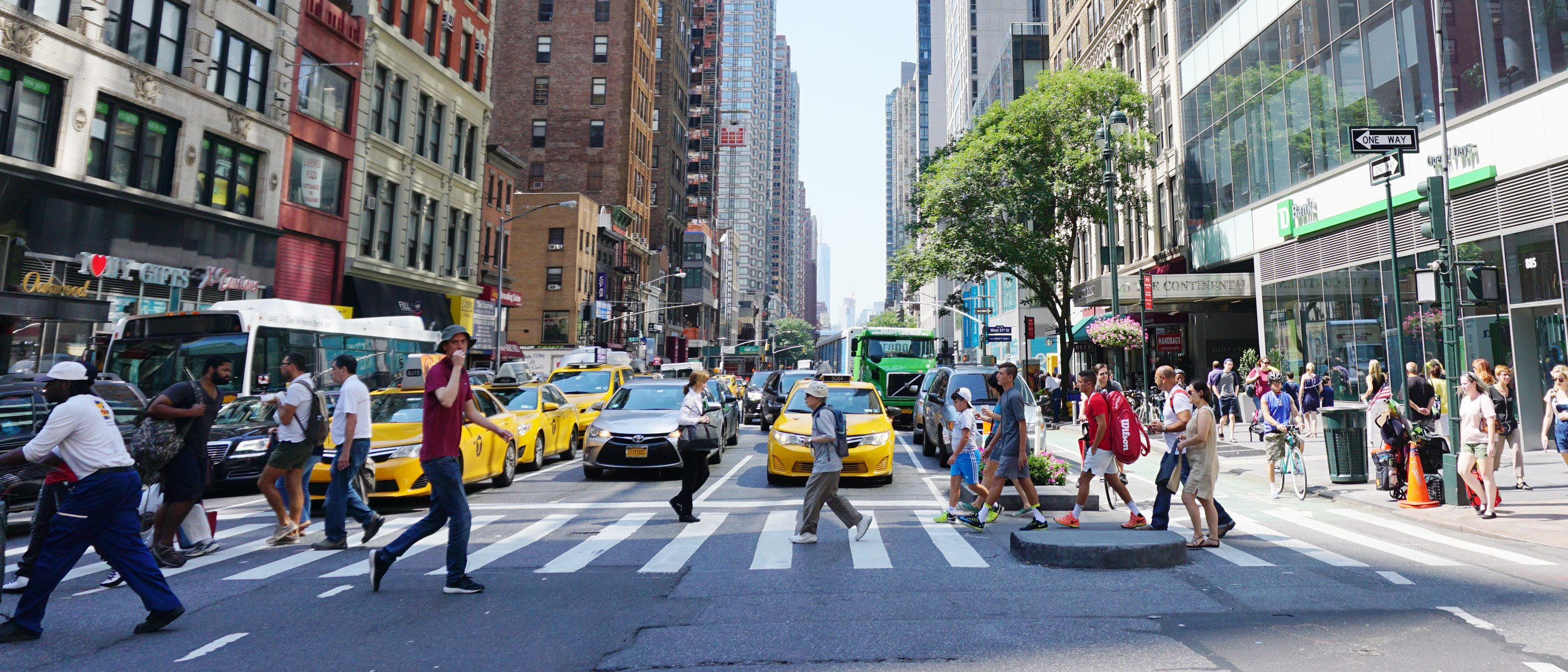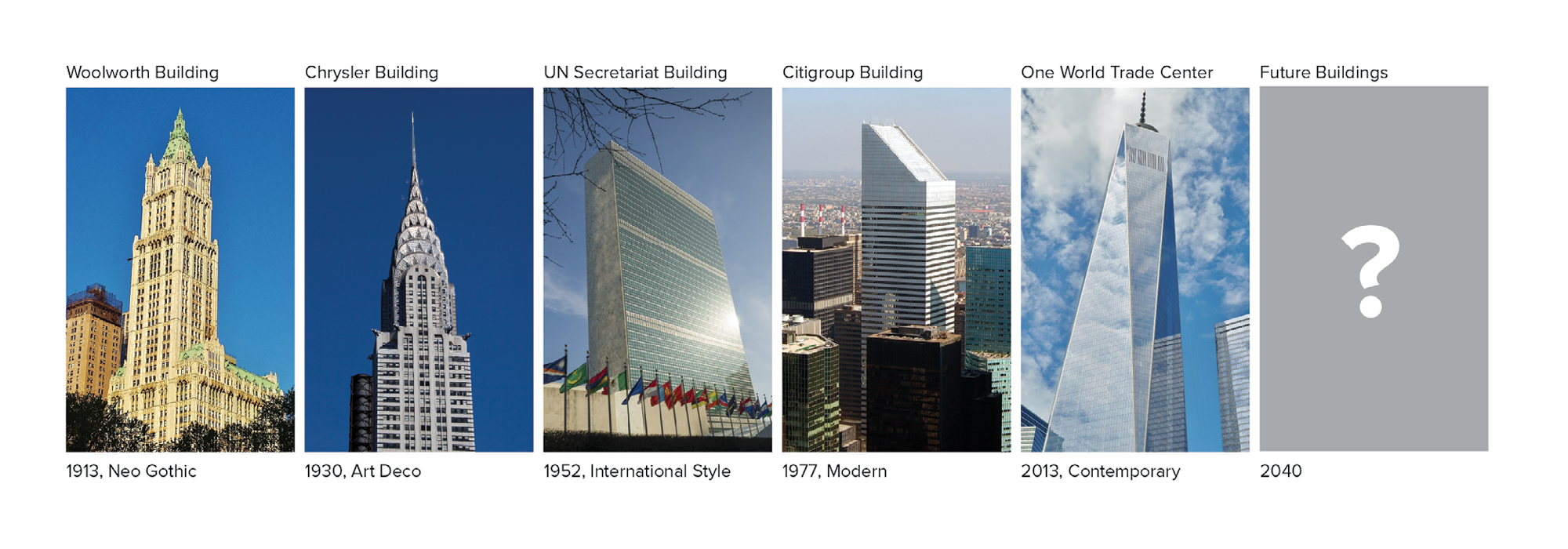
While Midtown and Downtown Manhattan have come a long way since the 1970s, regaining their standing as business centers on the world stage, other cities today are surpassing New York, with more investments in new office space and infrastructure. In the next 25 years, the region has the potential to add 1.9 million jobs, with nearly a million of these in office industries ranging from finance to technology. While many of these jobs can and should locate in commercial and business centers throughout the region, the core central business district (CBD) will need to accommodate more workers even as it deals with growing congestion and a shortage of room for expansion.
A CBD that attracts more high-value jobs and businesses is essential to meeting the goals for a successful region. The income of workers in the core flows throughout the boroughs and counties outside of Manhattan, supporting jobs in industries ranging from technology to retail, that expand economic opportunity. This revenue and economic activity create the demand needed to strengthen the economies and tax base of cities, towns and villages. And attracting jobs to the urban core where transit access is the greatest can make the region even more energy-efficient and sustainable.
To support this growing regional economy, the urban core should be able to absorb over 800,000 jobs by 2040, with over 300,000 of these in the Manhattan CBD. The barriers to achieving this potential are limited space for expansion, congested access into the core, and the need to improve the public realm.
- Once the development of Hudson Yards on Manhattan’s far west side is completed, there will be no more large areas where commercial development can expand within Manhattan. In addition, many older commercial buildings are being converted to residential use. Any additional job growth south of 59th Street will need to be accommodated either by adding more workers to current office space, or building new and taller buildings in existing office districts.
- Transit capacity into Manhattan, whether from subways, buses or commuter trains, is already straining to meet demand. Projects planned or under construction, chiefly the East Side Access project bringing the Long Island Rail Road into Grand Central Terminal and the Gateway project that would build two new tunnels under the Hudson River, are essential but will not provide all the transit capacity needed.
- Streets and public spaces need to be less congested while adapting to changing technologies, new businesses and evolving worker needs.
Expand Manhattan’s main Midtown business district south, east and west
While Manhattan is heavily built up and difficult to redevelop, with high-density residential districts surrounding most of the Central Business Districts, there are some opportunities for expansion:
- A redeveloped Penn Station should allow for air rights to be unlocked, and a modern office district developed in conjunction with a transformed West Side.
- The newly rezoned East Midtown office district could be further extended to the Second Avenue corridor in East Midtown, as well as possibly south along Madison, Park, and Lexington Avenues. This would also allow businesses to fully take advantage of RPA’s proposed regional rail hub on 31rd Street and Third Avenue.
- South of 34th street, older office buildings should be allowed to build additions or take other opportunities to add usable space in return for preserving office, commercial, or light industrial uses. The Garment District should be a vibrant place anchored by the next generation of manufacturing activities.
- In the longer term, an extension of the #7 train south with a new stop on 23rd street would allow for rezoning for more office development west of Ninth avenue, as well as transit access to Chelsea Piers and the 23rd street ferry terminal.
Preserve the CBD’s older office space
One of the keys to the region’s strength is the synergy which allows both emerging and established businesses to co-exist in desirable commercial areas which have proximity and access to a talented workforce. Our older class B & C office space, with their less expensive rents, help provide this.
Class B & C office space is often under pressure to either renovate into more expensive class A office space, or convert to residential use. Conversions to residential use are most prevalent in older buildings with smaller floor plates, which are difficult or impossible to renovate to modern standards. This is especially true of buildings outside of core Midtown Manhattan.
However, zoning regulations can limit the amount of residential conversions and preserve much of this cheaper office space, while still allowing for other uses which can help the finances of the building. These regulations are already in place in some areas of Midtown South and Chelsea, and can be extended both geographically and in the types of buildings they cover. In districts where older office space is underbuilt, these can be combined with regulations to allow for expansion of the building envelopes if office space is preserved.
Create an inner ring of mixed-commercial/residential neighborhoods in New Jersey, Brooklyn and Queens
One of the successes of Downtown Manhattan and Downtown Brooklyn, and East Midtown is how they have developed into mixed residential/office districts, providing vibrant 24-hour neighborhoods with jobs, housing, retail, and attractions. Other areas proximate to the CBD, such as West Midtown, Jersey City, Downtown Newark, and Long Island City, should follow this model and balance office, residential, and amenities growth in a similar way.
In addition to providing more office space, as well as more options for business locations and worker commutes, this also allows for an easier transition between the CBD and residential neighborhoods. This 24-hour nature also allows for more off-peak work hours, as well as shopping and other excursions before or after work, which helps reduce peak-hour commutes and overcrowding.
It only takes a small amount of housing to balance a Central Business District neighborhood. In Downtown Manhattan and East Midtown, there is about 3 square feet of residential space for every 10 square feet of office space. Downtown Brooklyn, Jersey City, Hoboken, Long Island City, and other inner-ring areas with good transportation and the potential to become mixed commercial/residential neighborhoods should attempt to increase commercial space to achieve a similar balance.
It is also vital that the type of housing in these neighborhoods consist of mixed-income, primary-residence apartments whose residents will contribute to the everyday vitality of the neighborhoods. In New York City, this can be done through lifting the 12.0 residential zoning cap and upzoning for Inclusionary Housing to require mixed-income developments, and instituting a pied-a-terre tax to encourage primary occupancy.
Expand exclusive commercial zoning and protections
Areas that were recently rezoned largely for commercial development, such as Downtown Brooklyn and Long Island City, have instead become predominantly residential districts. Hotel use can also take the place of intended office development in some of Manhattan’s zoning districts in Midtown South and the West Side.
Many different zoning protections can allow for the preservation of office space, either alone or in tandem with other uses, in addition to special districts such as Hudson Yards which can guide its creation, and these should be utilized and expanded.
This type of zoning is especially important if the 12.0 FAR limit on residential is raised or lifted. This would encourage the type of large, mixed-use, mixed income developments in the urban core which can add significant amounts of both mixed-income housing and needed office space.
Implement a phased expansion of subway and commuter rail access into the Central Business District
A premier central business district needs to be able to draw on a large and varied labor pool, over a wide geography. Mass transit access has driven Midtown’s primacy as the region’s main business district for decades. RPA’s proposed regional rail system and subway improvements to modernize and expand this infrastructure will allow the central business district to not only thrive, but also improve connections to other CBDs throughout the region. In the next decade, the most critical improvements include:- Build new rail tunnels under both the Hudson and East rivers (“Gateway East”) creating a new crosstown line and through service at Penn Station
- Construct a second bus terminal under the Javits Convention Center
- Reconstruct the L train with radically improved service
- Extend the Second Avenue subway to 125th Street
Encourage innovative buildings, signature design, and a sense of place and openness
One of the major strengths of New York’s Central Business District is its iconic skyscraper architecture, from pre-war to Art Deco and International Style buildings, which contribute to the identity of Manhattan. We need to continue this tradition of pioneering urban design and diverse building types. There should be more flexibility and incentives in the zoning and building code for innovative architecture in Central Business District. We should encourage buildings with amenities such as observation decks and restaurants, or those with greater public access and interaction with the streetscape.
In addition, both Downtown and Midtown have several distinct sub-districts, each with their own character, which should be nurtured through BIDs, protective zoning, Special Districts, and other mechanisms. Some, like Stone Street, are only a few blocks while others, like the Theatre District, are the size of small neighborhoods. This diversity of sub-districts leads both to a variety of location choices for businesses, and helps make the city a leading global tourist attraction.

Outcomes
By creating the ability and conditions for the CBD to grow and remain diverse, we will build on the recent successes that have made Manhattan and the region a premier global business and tourism destination. Jobs, wages, and investment will all continue to grow, providing opportunity and growth throughout the region. This vibrancy will continue to serve the people of the region through maintaining and building on the world-class public and cultural amenities that are used by all people in the region– the museums, parks, libraries, theatres, historical sites, and everything else that makes Manhattan what it is.
These recommendations will allow the urban core to add over 800,000 jobs over the next 25 years, almost twice as many compared to current trends. At current salaries, these added jobs represent an additional $75 billion in wages annually that will boost economic growth and opportunity throughout the region.
Paying for it
Making sure we keep a competitive CBD will greatly impact the finances of the city and the region in a positive way. The highest government costs will be investments in transportation and streets. These multi-billion dollar investments will serve the entire region and could be paid for through a combination of federal funding and new state and local sources, including congestion pricing, carbon fees and revenue from increased real estate value. Over time, these will generate tax revenue and economic activity that will more than pay for the investments. Zoning protections for commercial development will allow for more value-added jobs, although it may somewhat repress residential development by disallowing the highest current economic use.